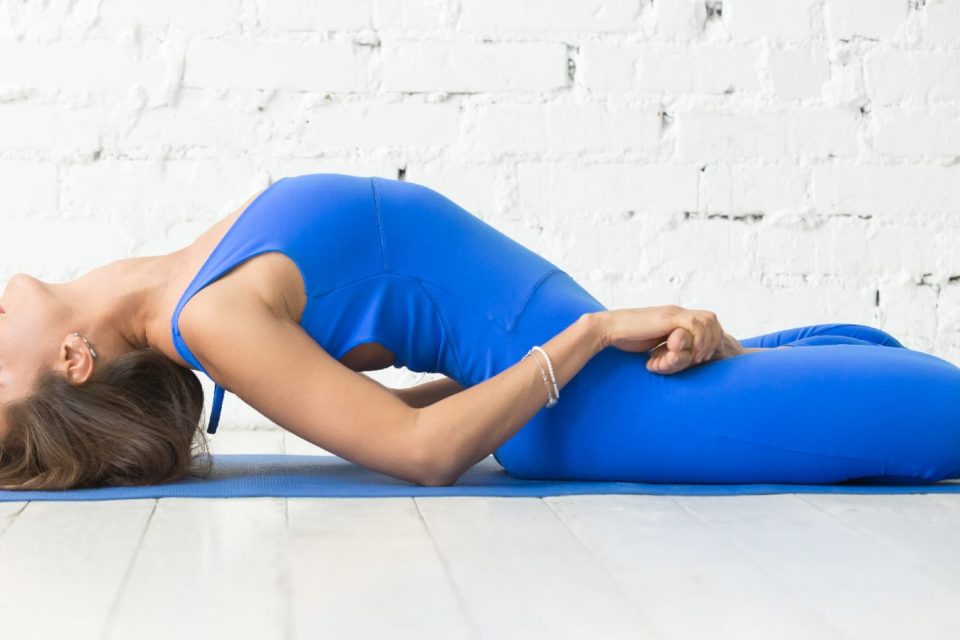Fish Pose: 5 Matsyasana variations for flexibility and energy

Matsyasana, also acknowledged as the Fish Pose, features several actual physical, therapeutic, and psychological benefits. You can also try variations of Matsyasana to split the monotony.
In yoga, Matsyasana or the Fish Pose is all about stretching the entrance portion of your human body, like stomach muscles, chest and neck. It enhances flexibility, alleviates abdominal challenges like constipation and allows you to chill out. This yoga asana has lots of wellbeing rewards. But you really don’t have to do the similar pose every working day. You can incorporate it with other yoga asanas like Easy Pose (Sukhasana) or Lotus Pose (Padmasana). Permit us convey to you a lot more about the versions of Matsyasana and how to do them.
What is Matsyasana or Fish Pose?
Matsyasana is an asana that resembles the tail of a fish. It invites you to encounter the grace of floating in h2o, says yoga specialist Dr Hansaji Yogendra. Like the undulating waves, Matsyasana can grant you numerous actual physical, therapeutic and psychological gains.
What are the health and fitness gains of Matsyasana?
Like each and every yoga asana, it can quiet your mind. But it has more advantages to offer you –
1. Physical rewards
- Stretching of belly and upper body muscular tissues delivers an internal massage to organs, suggests the expert.
- Strengthens and tones the pelvic floor and sphincter muscular tissues.
- Improves versatility by stretching hip flexors.
2. Therapeutic positive aspects
- Neck muscle stretching aids in regulating thyroid functionality and thymus gland, strengthening metabolic and immune devices.
- Alleviates abdominal illnesses like constipation, inflamed and bleeding piles.
- Relieves problems of pelvic organs, specifically reproductive organs, and lowers the prospects of vaginal prolapse and tension incontinence.
3. Psychological gains
- Promotes a sense of properly-becoming.
- Induces calmness and relaxation.
- Builds strength, recognition, and harmony.
How to carry out Matsyasana?
To do the Fish Pose, start by lying supine on a mat with your hands beside your physique. Your legs should really be saved jointly with heels touching and toes pointing upward. Dr Yogendra claims you will have to unwind your mind and breathe generally when you do this pose.
Also Go through

- Carefully fold your legs employing your hands.
- Attract your arms below your head, bending at your elbow.
- Clasp the reverse elbows, allowing your hands rest on the mat over your head.
- Manage the place and breathe rhythmically for a minute or two.
- To release, unclasp your hands, unfold your legs, and return to the commencing placement.
What are the variants of Matsyasana?
There is not just a person way to do the Fish Pose. Below are some more possibilities you can consider –
1. Toe-holding Matsyasana
- Lie on your again.
- Fold your legs in Padmasana.
- Get your big toes with your fingers.
- Keep it for a couple seconds as you breathe deeply.
2. Crossed-arms Matsyasana
- Lie on your back and keep your legs extended.
- Fold your legs in Sukhasana or Padmasana.
- Cross your arms below your head and location arms on reverse shoulders.
- Keep it for a few seconds although respiration deeply.
3. Matsyasana in Sukhasana
- Sit cross-legged in Sukhasana (uncomplicated pose).
- Spot your fingers beneath your hips, with your palms down.
- Arch back, lift chest, and tilt your head again.
- Maintain this place for a several seconds and breathe deeply.
4. Matsyasana in Padmasana
- Sit in Padmasana (lotus pose).
- Maintain your arms beneath your hips, and your palms down.
- Arch again, carry your chest, and tilt your head back.
- Breathe deeply as you maintain this situation.
5. Matsyasana with prolonged legs
- Lie on your back again with your legs extended.
- Position your fingers beneath hips, palms struggling with down.
- Elevate your chest, arch again, and tilt your head again.
- Hold the pose for a handful of seconds while you get deep breaths.
Who must avoid Matsyasana?
While performing Matsyasana can make lots of of your wellness issues go away, some individuals need to stay clear of it.

Healthshots Interior Circle An exclusive wellness neighborhood for women
Join NOW

- Matsyasana will involve extreme stretching, which may perhaps exacerbate joint discomfort for individuals with critical arthritis.
- Those who have heart situations really should keep away from the pose, as the intense backbend can strain the cardiovascular program.
- The strain on the abdomen all through Matsyasana may well aggravate problems like peptic ulcers and hernias, suggests the skilled.
- Individuals with spinal injuries or continual again issues ought to chorus from Matsyasana thanks to its prospective influence on the spine.
Matsyasana is a potent yoga pose that desires to be practiced mindfully with steady and deep breathing, states the expert. Whether or not you observe the basic or venture into these Matsyasana variations, the essence remains the identical.